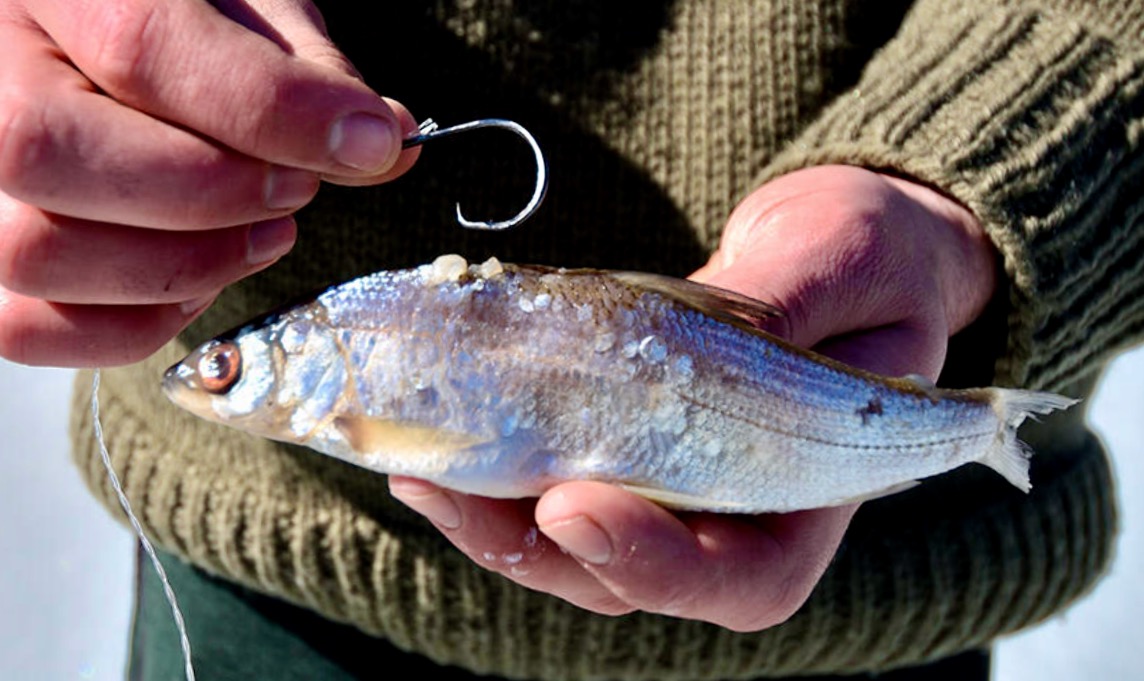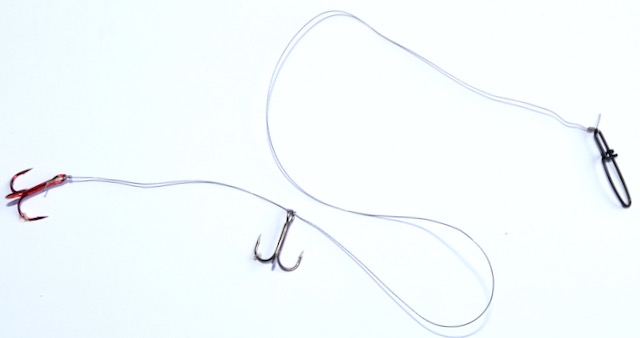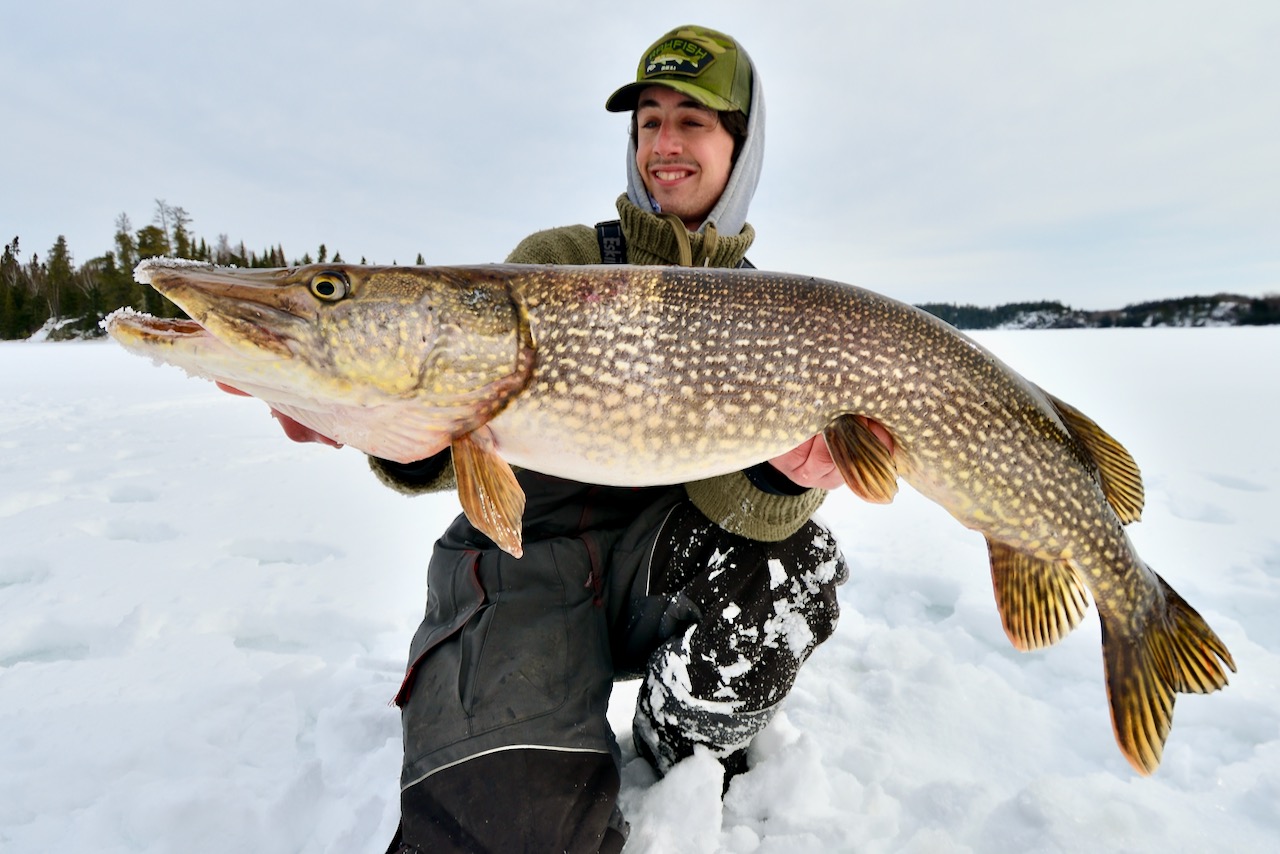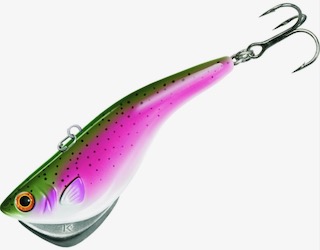PRO PIKE PLOYS
Expert wintertime techniques for hauling more gigantic northerns through the ice
Advertisement

#5 DROP A DEAD BAIT
There’s no disputing pike go gaga for fresh dead baits such as ciscoes, suckers and smelt (where legal), or even store-bought mackerel and saltwater herring. The best way to present a dead bait is under a tip-up using either a quick-strike rig or a circle hook. You can easily make your own quick-strike rig with a 14- to 18-inch length of 20- to 30-pound titanium, stainless steel or seven-strand wire. Simply tie or crimp on two #4 Gamakatsu Round Bend Treble Hooks, spaced 2½ inches apart, to one end of the leader, then add a #4 swivel to the other end.
Doug Stange pioneered the use of quick-strike rigs and dead baits for pike in North America more than 30 years ago, learning the fine points from Dutch experts such as Jan Eggers. Doug and I quarrel to this day about whether it’s best to hang your bait horizontally (my preference) or vertically (his choice).
Advertisement
Try them both and decide for yourself, but always remember to keep the front half of your dead bait free of hooks. You want one treble embedded near the tail and the other pierced lightly under the skin at the dorsal fin. Pike always take dead baits headfirst, so when you see a flag fly, sweep-set immediately—that’s why they’re called quick-strike rigs. That way, you’ll pin the fish in the lips, never in the throat, making for an easy live-release.

Quick-strike rigs have served me over the years—I can honestly say I’ve never deeply hooked a fish—but using a single barbless 5/0 Gamakatsu circle hook (4/0 for smaller dead baits) has taken the dead-bait game a step further. I attach my circle hook to an 18-inch length of 30-pound AWS Surflon Micro Supreme, a wonderful tieable stainless steel wire (above).
I’ve also been experimenting with 40- and 50-pound Maxima Ultragreen monofilament and fluorocarbon line, and have no quarrels whatsoever—it has worked beyond my expectations. Just make sure the hook is perfectly straight and not bent or offset to one side or the other. (Also see www.outdoorcanada.ca/quickstrikepike.)
Advertisement
What I particularly like about circle hooks is that when you see a flag fly, there’s no rush. If the ice is slick, you can tiptoe out slowly, lift the tip-up out of the hole, grab the line and pull steadily in one direction. Never jerk-set a circle hook or you’ll lose the fish. When you do it right, however, you’ll lock the hook so securely in the side of the pike’s mouth that you’ll need pliers to pop it free.
And since there’s never a second hook swinging around with this rig, you can slide your hand down along the fish’s head and slip your fingers in behind its gill plate to pull it up the hole. Circle hooks are not only better for the fish, they’re clearly better for the angler, too.
Advertisement
BONUS TIP: CRANK ’EM IN
I’ve started catching pike the last few years jigging large lipless crankbaits, such as the four-inch Kamooki SmartFish Rainbow Trout. I thought the tactic would simply attract the fish to my deadbaits, but I was shocked to catch as many pike on the cranks as my set lines. For this presentation, I use a longer, 42-inch, heavy-action ice rod and reel spooled with 20- to 40-pound Maxima or Sufix 832 braid. A 30-pound test leader fashioned from AWS Surflon Micro Supreme tieable wire complements the set-up perfectly. Just be sure you’re hanging on tight when one of these freshwater gators tries to rip the rod right out of your hand.


